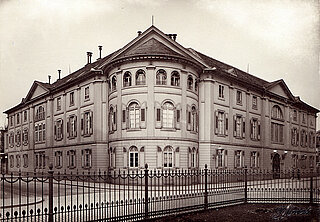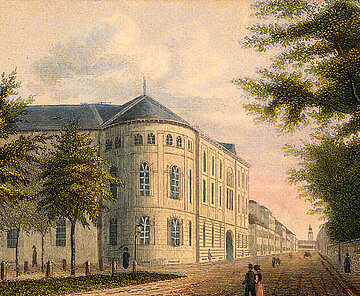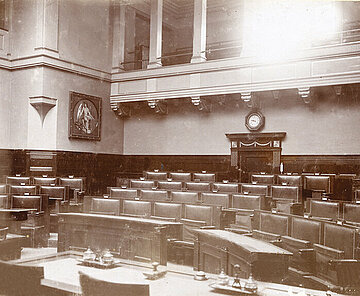History of the 'Ständehaus' (House of the Estates)
Karlsruhe’s Ständehaus, Germany’s first parliament building, was erected between 1820 and 1822. This is where the Baden State Parliament had its seat until 1933.
In the 19th century, the Grand Duchy of Baden provided the most fertile soil for the formulation and implementation of democratic ideas. The prerequisite and basis for this democratic development was laid with the Baden Constitution. The Constitution of 1818 can rightly be referred to as the freest, most advanced document of early German constitutional law. The members of the Baden Parliament’s second chamber formulated democratic standards which are still valid today. The Karlsruhe debates’ repercussions were not only felt in other German states, but also met with considerable acclaim abroad.
This is associated with names like Karl v. Rotteck and Karl Theodor Welcker, later on also Ludwig Frank, Wilhelm Kolb and Oskar Muser. The discussions, for example, with regard to the creation of a traditional justice system, the abolition of corvée/drudgery and due as well as the recognition of the freedom of the press, transformed the Karlsruhe Ständehaus into the "cradle of parliament", "the second chamber provided a stage, which oftentimes served as substitute for the lacking German parliament."
Initially, the second chamber met in the Grand Ducal Palace and in a building at Rondellplatz, then, from 1822 to 1933 moved to the Ständehaus building (House of the Estates) on Ritterstraße, completed by the architect Weinbrenner’s student Friedrich Arnold and Germany’s first parliament building. Soon after the assumption of power by the National Socialists, the Landtag’s (Baden Parliament’s) fate was sealed. In 1933, on 9th June, the Landtag eliminated itself by adopting the Baden Enabling Act. On 30th January 1934, it was repealed by the national law on the “reorganisation of the states”.
In the Second World War, which had been started by National Socialist Germany, the Ständehaus (House of the Estates) was seriously damaged during air raids in 1944 and burnt down to the ground. As the Baden State was not re-established in the context of the reorganisation of the states after the war, the rebuilding of Ständehaus as a state parliament building was not necessary. Other solutions were discussed, but not implemented, which led to the demolition of the Ständehaus ruins in 1961/62. It was only in 1979, that the St Stephan catholic deanery centre was built on the larger part of the property. The remaining third of the property, where the Ständehaus stood, was used as a parking area, before an intensive debate on the use of the land started in 1987. The debate resulted in the building of a "New Ständehaus" (New House of the Estates) containing a library and a “Ständehaus Memorial Site”, thus uniting past and present under one roof. The permanent exhibition in the "Ständehaus Memorial Site" shows important stages of parliamentary and democratic history in Baden and recounts the story of the parliament building.


